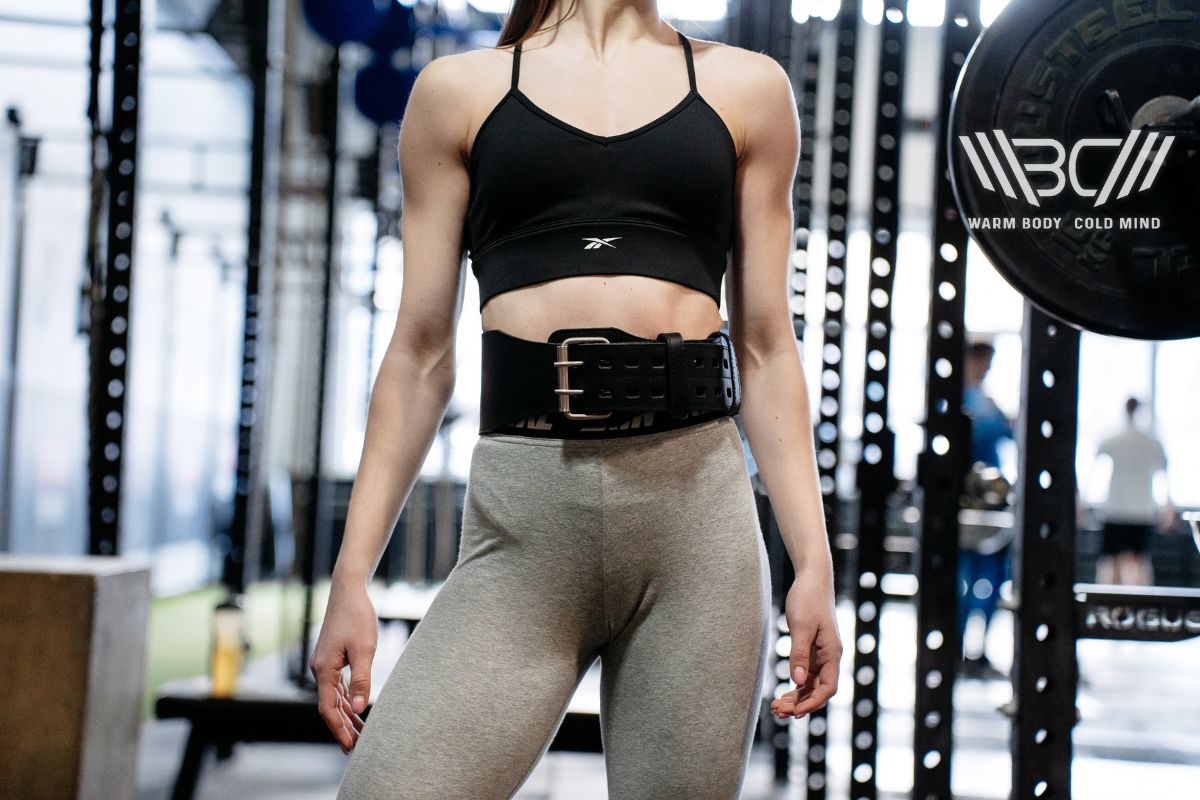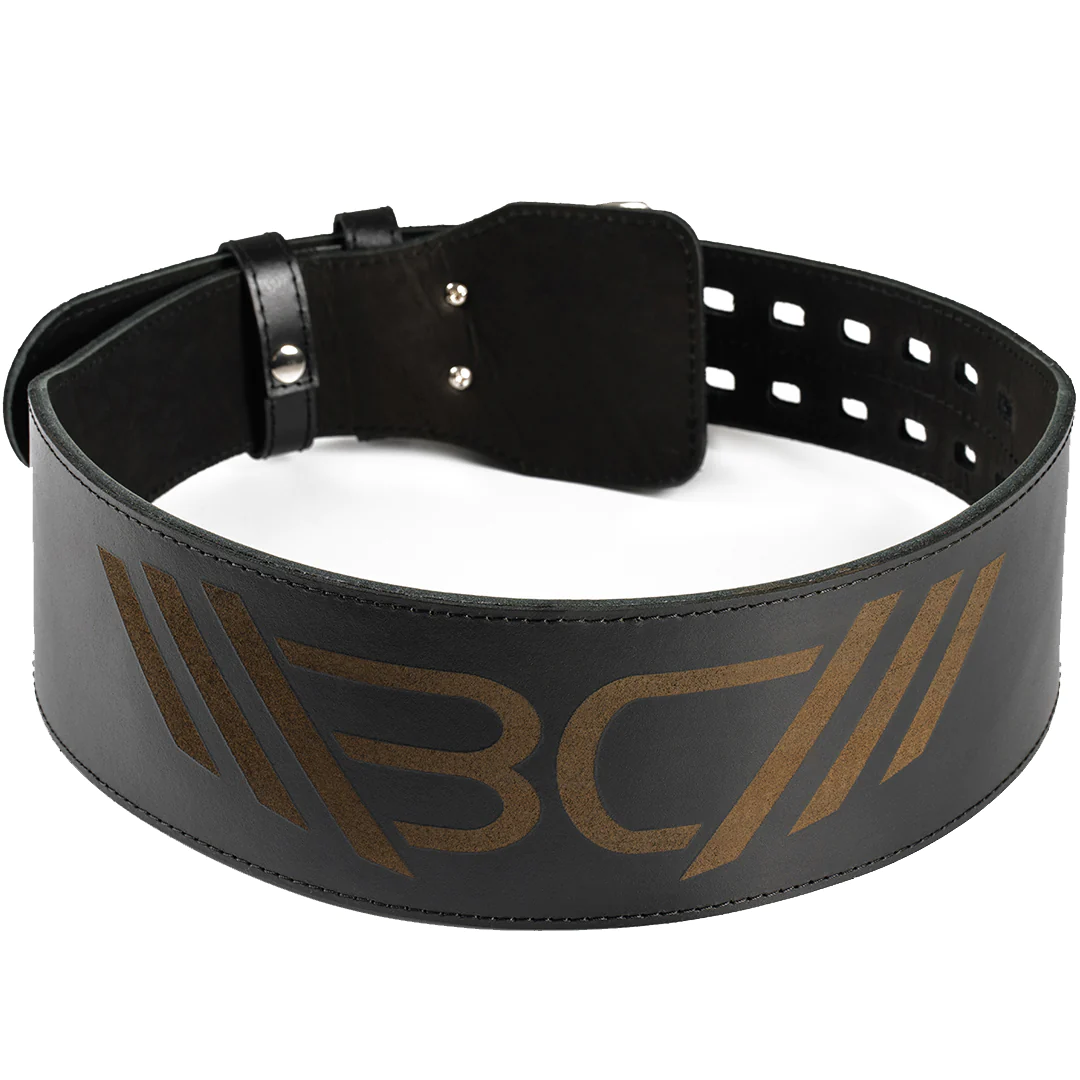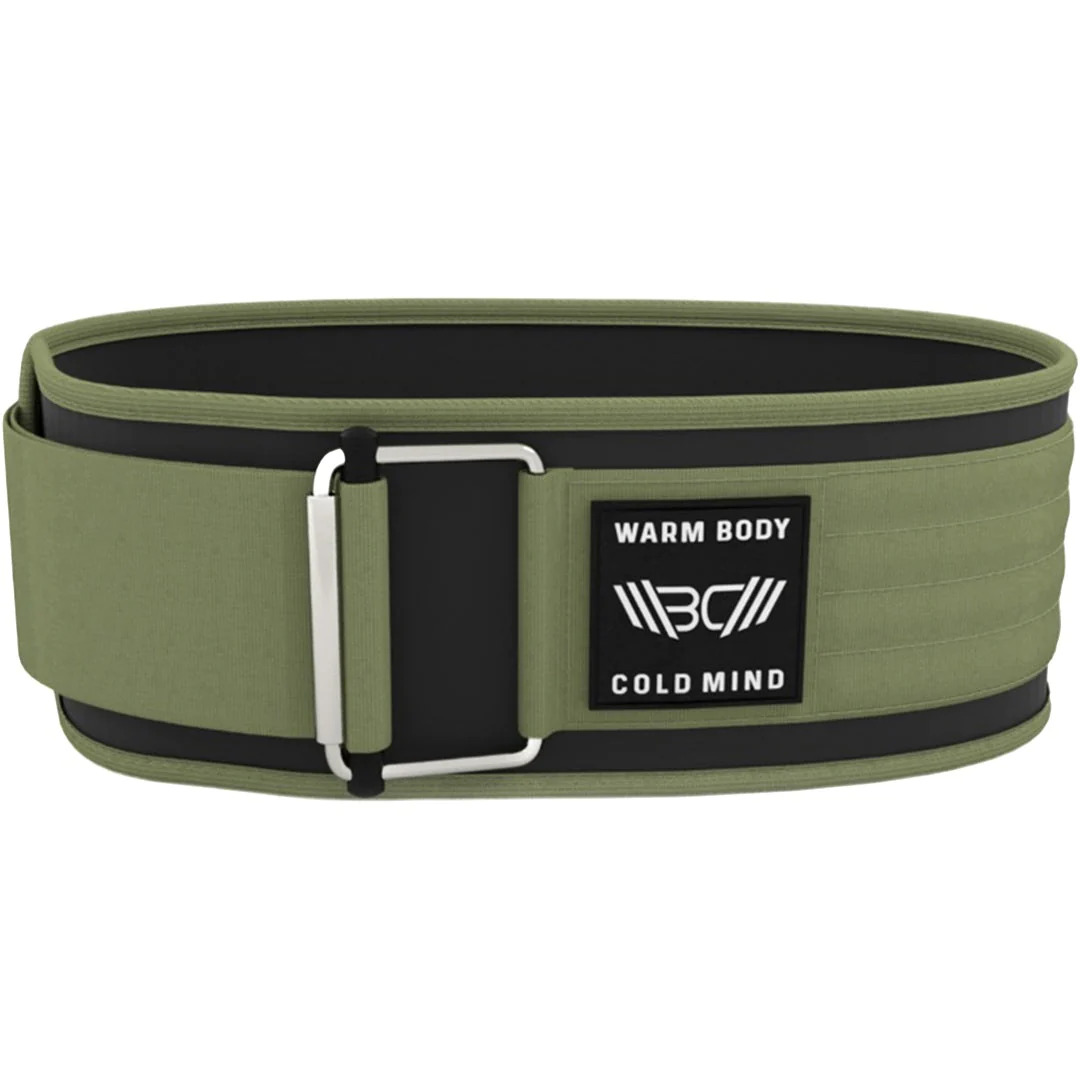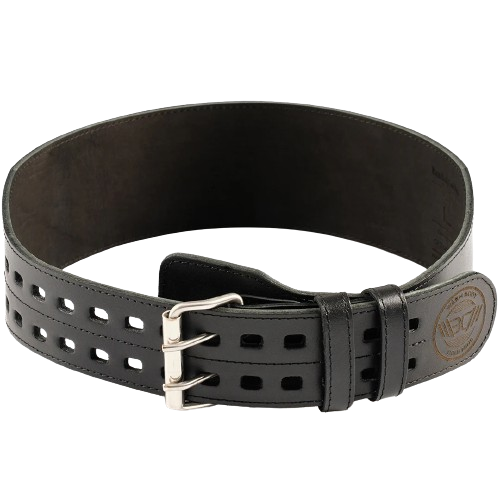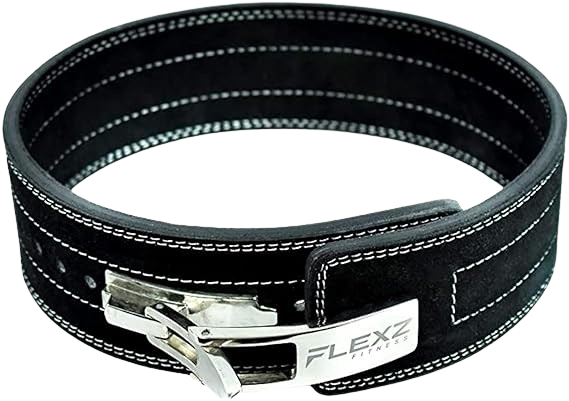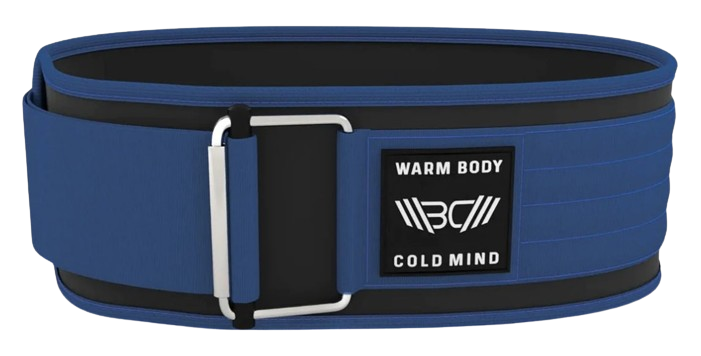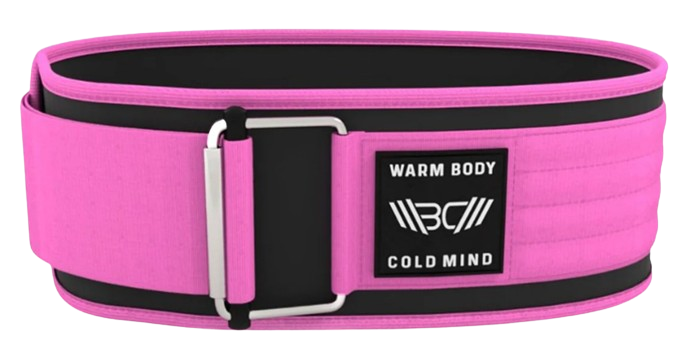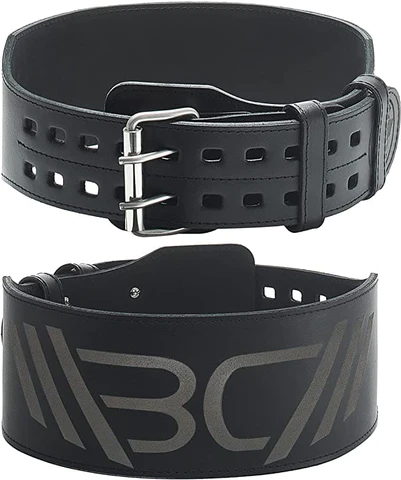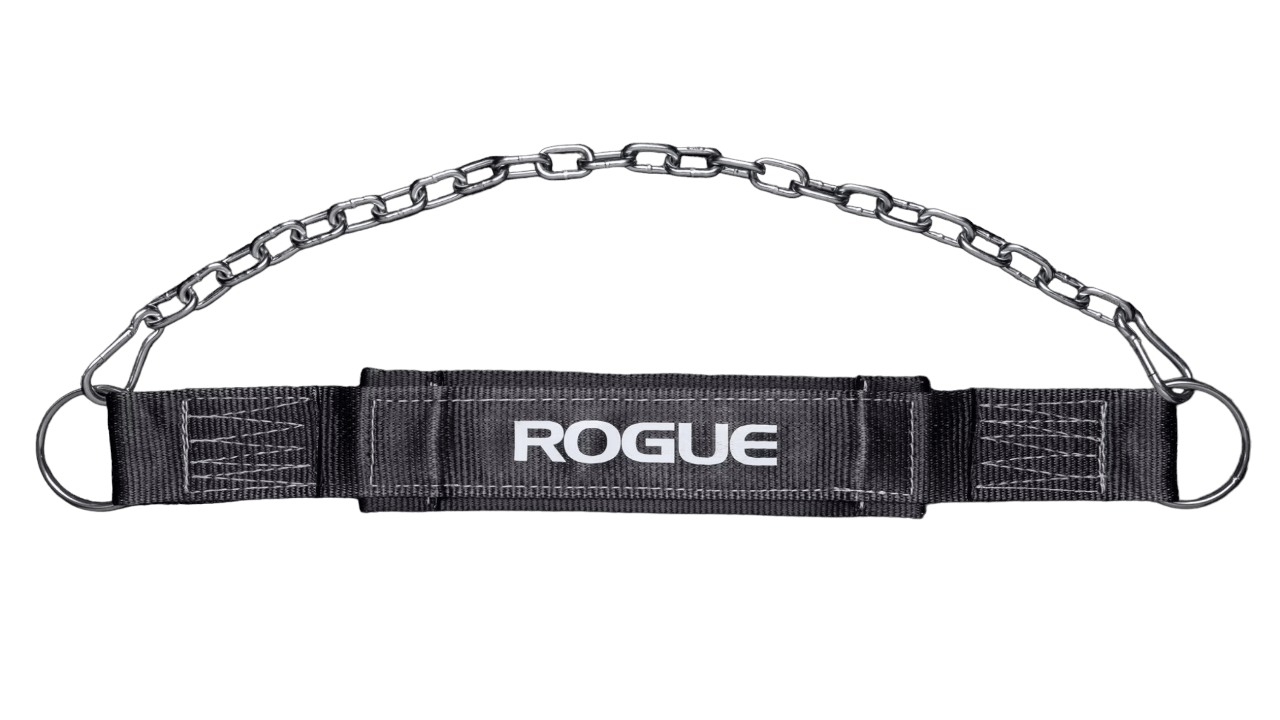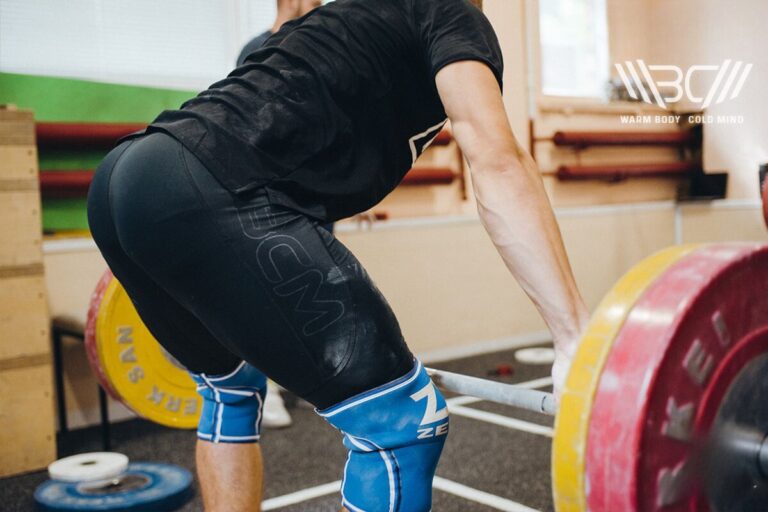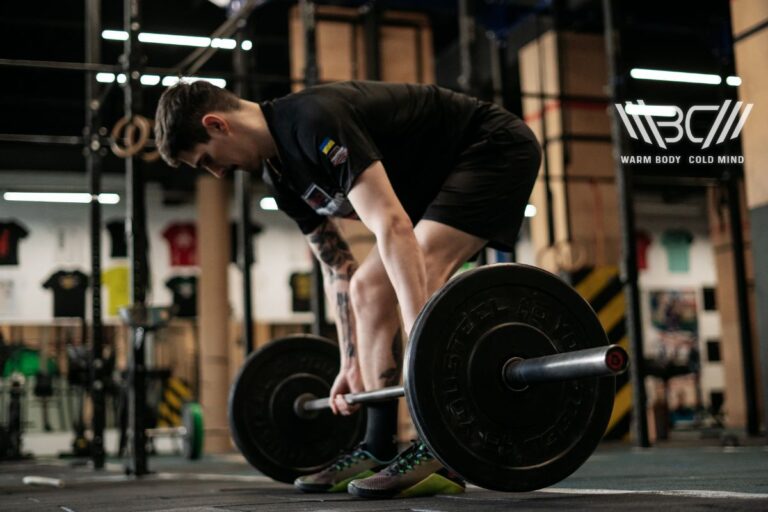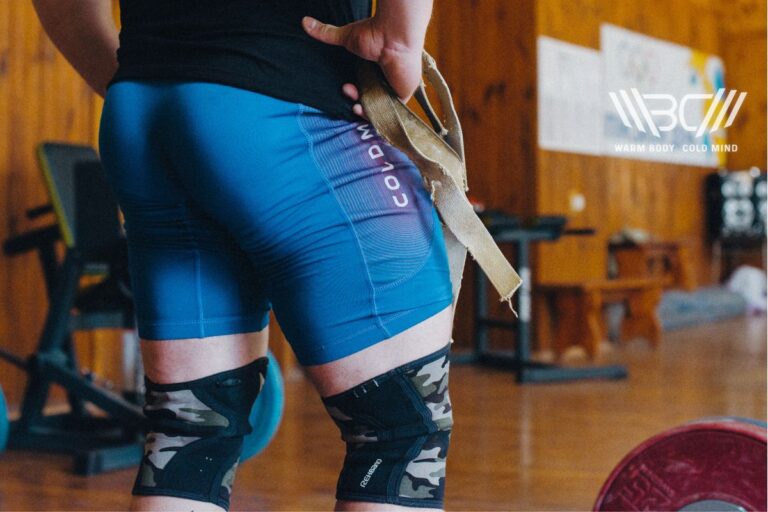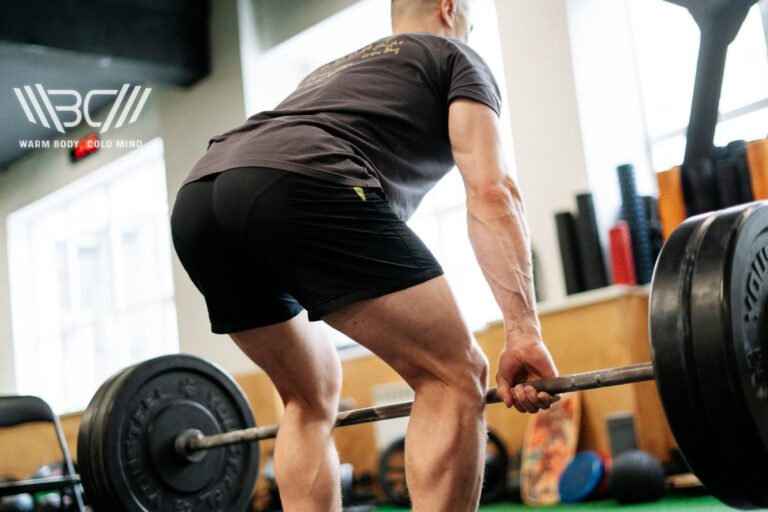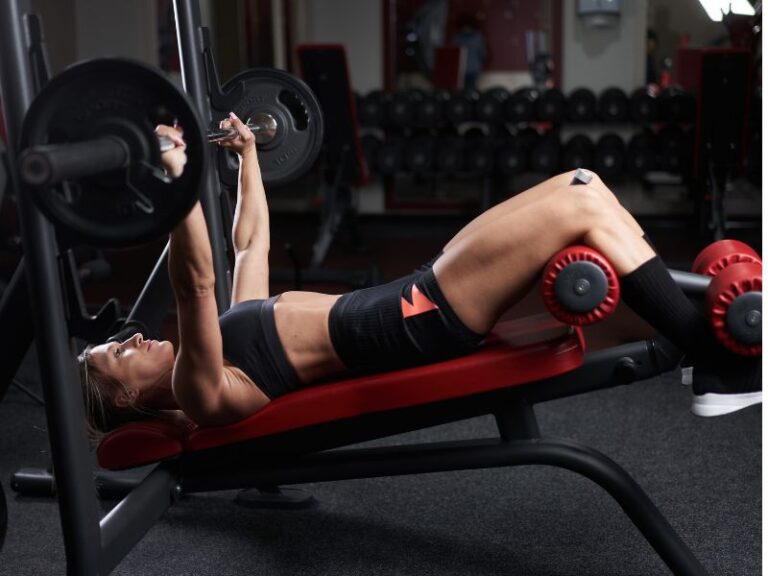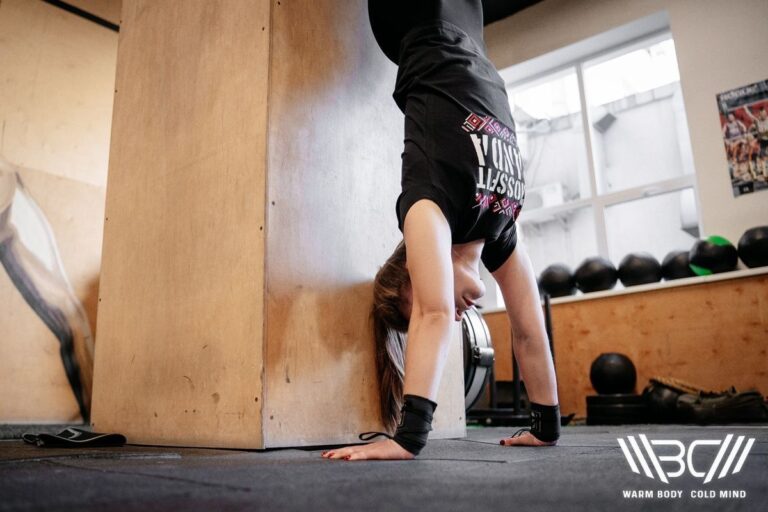5 Lifting Belt Types: All You Need to Know Before Buying
Finding your way in the world of strength training is a task in itself, especially when it comes to the types of weightlifting belts. You can go for the flashiest, most popular one that famous influencers recommend, but there’s no guarantee it will work for you. You want a belt that aligns with your needs and goals, but how exactly do you find it?
What do weightlifting belts do and do you even need one, or is it just an over-hyped accessory? If any of these questions popped into your head, you’re in the right place! This article has absolutely everything you want to know about weightlifting belts – materials, dimensions, even a few recommendations. Get ready to strap in and improve your lifting technique.
Let’s belt up!
What types of weightlifting belts are there? – They come in various types, like powerlifting belts, recreational belts, belts for functional fitness, etc. Some have single or double-prong buckles, while others use lever mechanisms for support during lifts.
What is a Weightlifting Belt?
A weightlifting belt is a piece of strength training (e.g., weightlifting, powerlifting, etc.) equipment designed to create intra-abdominal pressure in your core. The pressure stabilizes your spine, thereby aiding in the maintenance of proper posture and reducing the risk of injury.
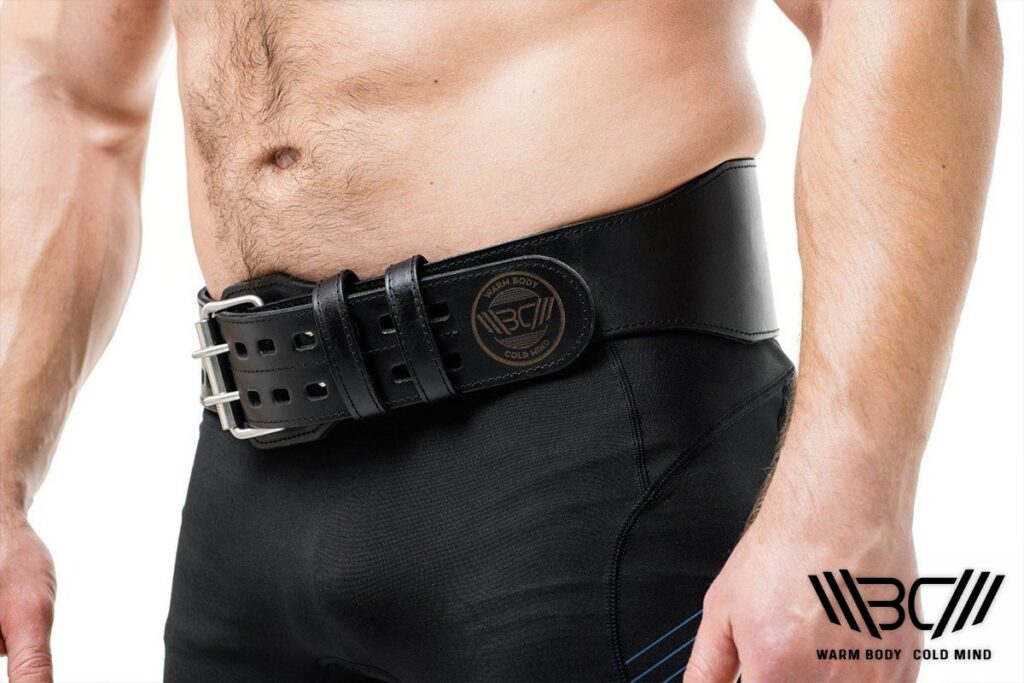
What Exercises Should I Use a Belt On?
Any exercises that place a high amount of stress onto your lower back can benefit from the use of a weightlifting belt. If you look around the gym, you’ll most commonly see athletes use a lifting belt for the following exercises: squats, deadlifts, overhead presses, Olympic lifts, and bent-over rows.
But regardless of the exercise you’re doing, if you’re unsure, or are feeling uneasy about lifting a very heavy weight (especially if you’ve never lifted such an amount), then consider asking a more experienced lifter, or a coach. There is no harm in being extra safe.
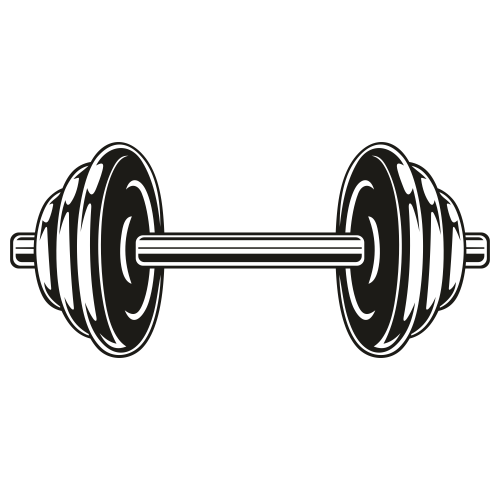
Pro Tip:
Keep in mind that if you’re trying to perfect your technique (regardless of exercise), it is better to lift lighter weights and focus on your posture and body position, as well as speed while lifting. A weightlifting belt is not a substitute for the lack of technique!
5 Benefits of Using a Lifting Belt
You may not even know you need a weightlifting belt, but you do, and you will understand that once you learn what do weightlifting belts do. They can improve your performance, and they’re important for stability and support during intense workouts.
Here’s why you need to run out and get a belt as soon as possible:

Enhance your strength training with Warm Body Cold Mind leather weightlifting belt providing exceptional support and durability.
✅ Core Stability
A stable core is crucial for generating force, and when you wear a lifting belt, it reinforces the core and promotes proper spinal alignment and stability. This will help prevent arching or rounding your back too much, which reduces the risk of injuries during heavy lifts.
✅ Increased Intra-Abdominal Pressure
Wearing a belt will increase intra-abdominal pressure, which means it will basically act as a natural weightlifting support system. The pressure will make your core stronger and more stable.
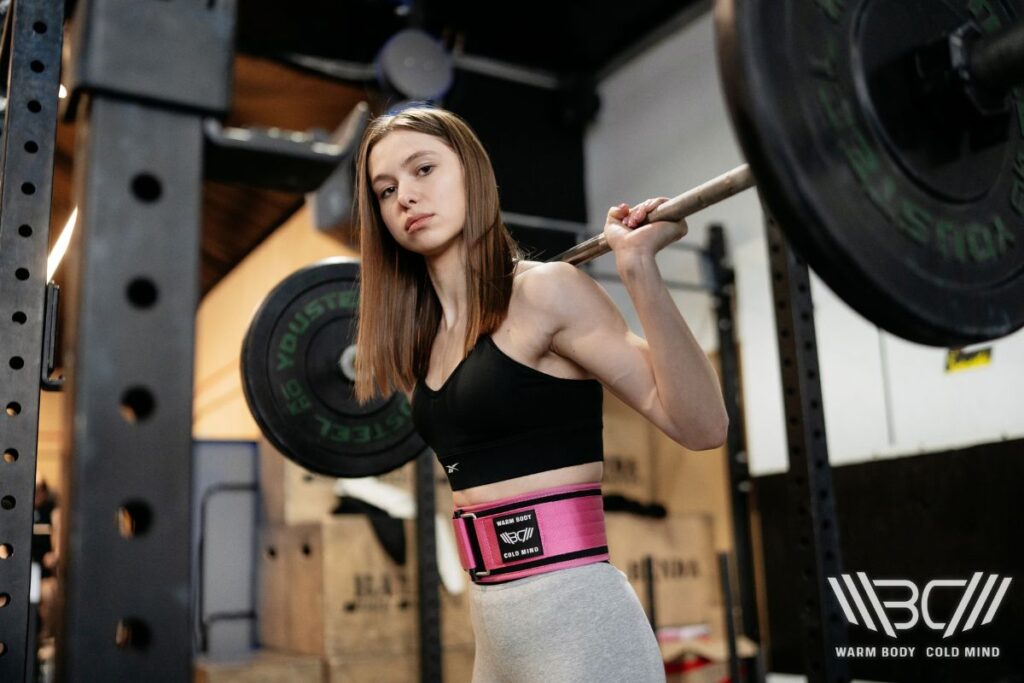
✅ Improved Lifting Mechanics
Lifting, especially compound movements like squats and deadlifts, needs your spine to be in a neutral position. Wearing a belt promotes that position, makes the lift easier on your spine, and helps you maintain proper lifting mechanics.
✅ Less Stress on Lower Back
A lifting belt will distribute the weight across your abdomen, so your back won’t handle as much stress as it would without a belt. This is especially important for people who have a history of issues with their lower back or those that want extra lumbar support.
✅ Preventing Injuries
Hyperextension or hyperflexion of the spine can lead to injuries, and wearing a belt can be a way of preventing that from happening. Think about maximal lifts or times when you’re really trying to push your boundaries; it doesn’t hurt to have a belt on and have some additional protection.

Discover the strength of the Warm Body Cold Mind nylon lifting belt. Lightweight and durable, it provides optimal support for your workouts.
Does the Type of Weightlifting Belt Matter?
It sure does! If the type of belt didn’t matter, there wouldn’t be so much to choose from because everyone would just use the same type. Not all weight lifting belt types will work for every person and every type of exercise, so making the right choice can mean a difference between an effective workout and wasting your time and energy.
An effective belt will provide support and stability, but not all belts can do that for you. Once you try a few of them out, you’ll see that some are a bit too thin for your liking, while others are bulky, and you feel ridiculous in them. Even though the process can become annoying, having all these different types is a great thing because it means everyone can find the perfect fit for themselves.
That is… After some frustration and possibly money that wasn’t spent in the best way. Unless, of course, you stumble upon an article that gives you all the right information and makes picking out a new belt a breeze! (wink-wink)
What Makes Lifting Belts Different? 3 Features
The great thing about lifting belts is that there are enough of them to cover everyone’s needs. This, however, also makes choosing the correct one more difficult because there’s a lot of features that make them different.
1. Materials for Lifting Belts
Nylon – Nylon belts are known for being versatile and affordable and you’ll often see Olympic weightlifters use them. They’re lightweight, which makes them flexible, and they’re suitable for a wide range of exercises. They’re not perfect, of course, and people who like their belts more rigid won’t like nylon belts. But if you’re looking for something flexible that won’t break the bank, a nylon belt is the way to go.
Leather – If you want maximum stability and durability, get yourself a leather belt. They’re famous for being able to withstand anything you throw their way, which is why powerlifters love them. Leather belts are excellent for heavy lifting, and they offer a lot of support to the lower back and core. They’re heavier and more expensive than nylon belts, and they usually need some breaking in before they’re fully comfortable.
2. Lifting Belt Dimensions
Width – Width is important because it determines how much support the belt provides to your core. You’ll see powerlifters wearing wider belts because they have extensive coverage and they’re great for stability. But wide belts aren’t as flexible as thinner ones, and they’re not ideal for dynamic movements, like Olympic weightlifting and functional fitness.
Thickness – This will determine how stiff the belt is. Thicker belts are more rigid, which is what you want for powerlifting, and they give great support for maximal lifts. But you don’t really want a thick belt for exercises that need a wide range of motion or agility.
Length – You’ll notice lifting belts come in all kinds of lengths, and this is because we all have different body proportions, and we all want different levels of support. A long belt will give excellent support for your entire core, but your movements will be a tad more restricted than if you were to use a shorter belt. Don’t use a long belt for dynamic movements because it might limit your overall mobility.
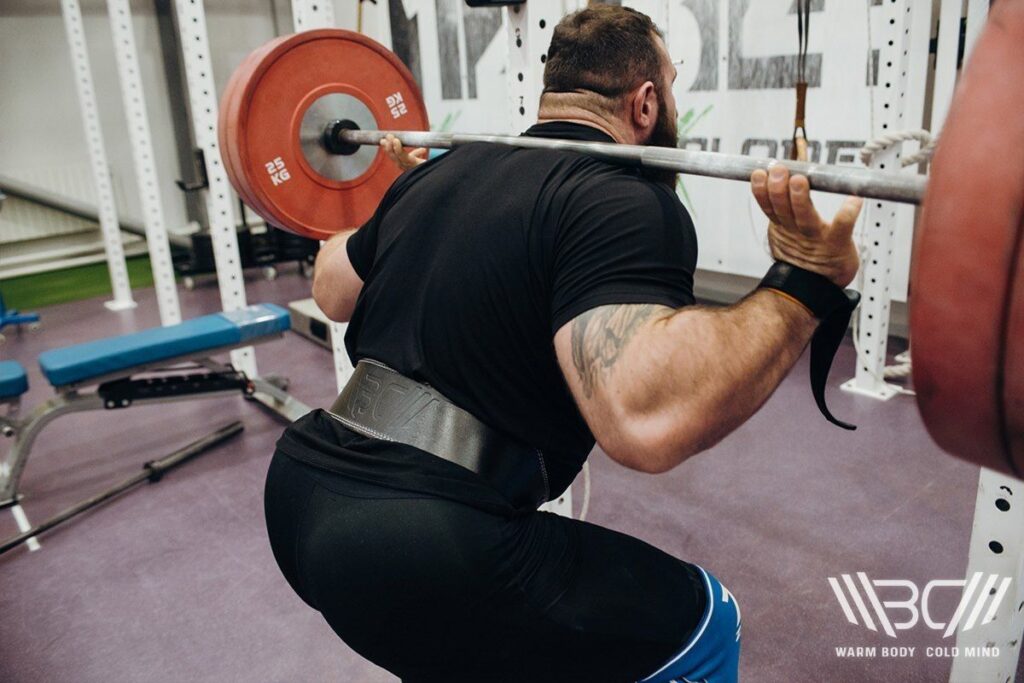
Taper – Tapered belts are narrower in the front, so they won’t restrict your freedom of movement. These are really versatile and they’re great for dynamic movements, but the trade-off is that they won’t provide as much support as wider belts, so refrain from using them for heavy lifts.
3. Fastening Mechanisms
Lever Buckle – If you want quick and easy adjustments, then a lever buckle is your best bet. They provide a secure fit with a simple lever mechanism, and seamless transitions. They’re not that simple at first, though, and there’s a bit of a learning curve with them. But once you get the hang of it, you’ll love lever buckles.
Ratchet – The fastening mechanism on these is similar to the one you’ll find on regular, everyday belts and you adjust it by tightening it. The fit is very customizable, which is great, but the mechanism will most likely show some wear and tear over time.
Prong (Single, Double) – This is a traditional buckle mechanism that has either a single or a double prong. You’ll get a secure fit out of, and those with a single prong will be a little easier to fasten. However, a double prong will distribute the pressure more evenly. This is a great fastening mechanism, but it will take you longer to fasten it compared to lever buckles.
Velcro – Velcro is convenient, easy, and quick, so it’s very popular in functional fitness and just general gym use. The fit it provides is customizable and there’s no learning curve. But even the highest quality Velcro is not insanely durable, which means you’ll notice signs of wear after a while, especially if you use your belt often.
Are Lifting Belts Unisex?
1. Women’s Belts
Men and women are anatomically different, so belts are usually designed to be used on different body shapes. Women’s belts are made to match the anatomical specifics of a female body, which means they are often narrower and have tailored contours.
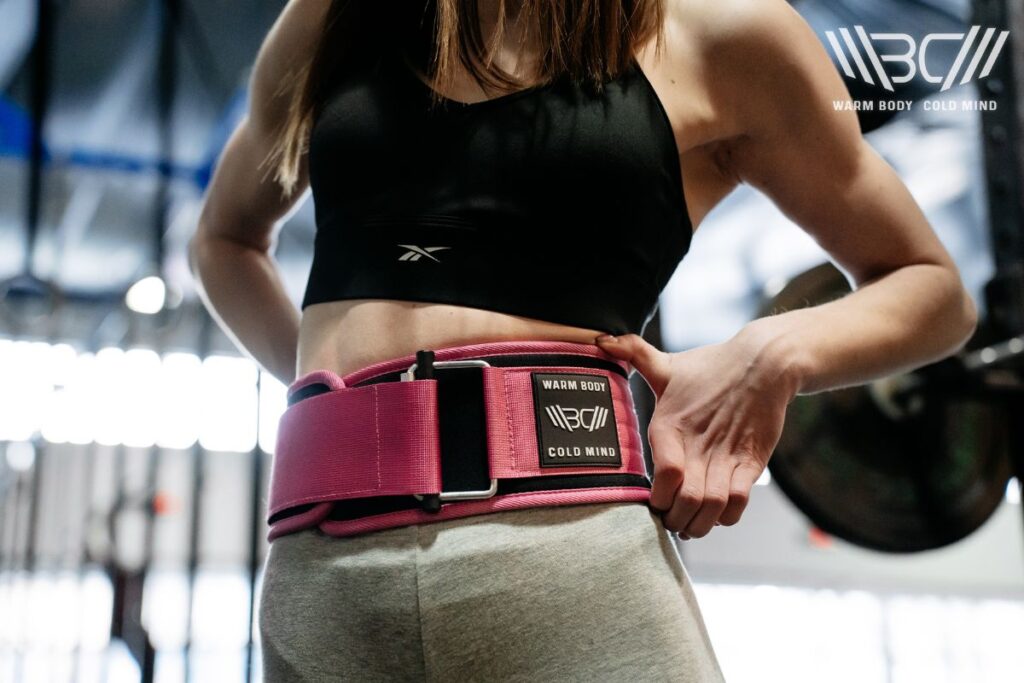
2. Belts for Men
Male lifters have a larger build, so it makes sense their belts need to be designed differently than women’s. Men’s belts are wider and designed for men’s anatomy.
Competition Rules
Not all lifting belts adhere to competition regulations, but some of them do. The IPF and IWF have strict criteria that belts need to meet to be considered allowed for use, like specific dimensions, materials, and fastening mechanisms. Before using a belt in competition, make sure it complies with all the rules.
5 Most Common Lifting Belt Types
Once you understand the different types of lifting belts, you’ll see it will be much easier to decide which of them would be ideal for you. Since every type is designed for specific needs and exercises, it’s super important to choose the one that will suit you. But how to choose a weightlifting belt and know you’ve made the right choice? Well, you should start by seeing what each type is made for and how they work.
1. Olympic Weightlifting Belts
Olympic belts have a relatively uniform width throughout and a tapered front. They’re designed specifically for those that do explosive and dynamic movements, like snatches and clean and jerks. The tapered front is important because it allows for greater freedom of movement during the catch phase of these lifts.
An Olympic belt will support your core but won’t restrict agility and it’s an ideal choice for anyone that wants a full range of motion during lifts. The mobility it allows is fantastic, but it doesn’t provide as much support for maximal lifts as a powerlifting belt does.
Our Olympic Belt Recommendation – WBCM Leather Weightlifting Belt
It’s only fair to recommend a belt after saying how important it is to use it, right? Our very own WBCM Leather Belt is high-quality, durable, and it will give just the right amount of support during weightlifting. The double roller stainless steel buckle is reinforced by four bolts and the belt is made to offer maximum support.
One of the best things about this belt is that there are 5 sizes available – S, M, L, XL, XXL, and XXXL. Your belt won’t work properly if the fit is off, so being able to choose from a few different sizes is a huge plus.
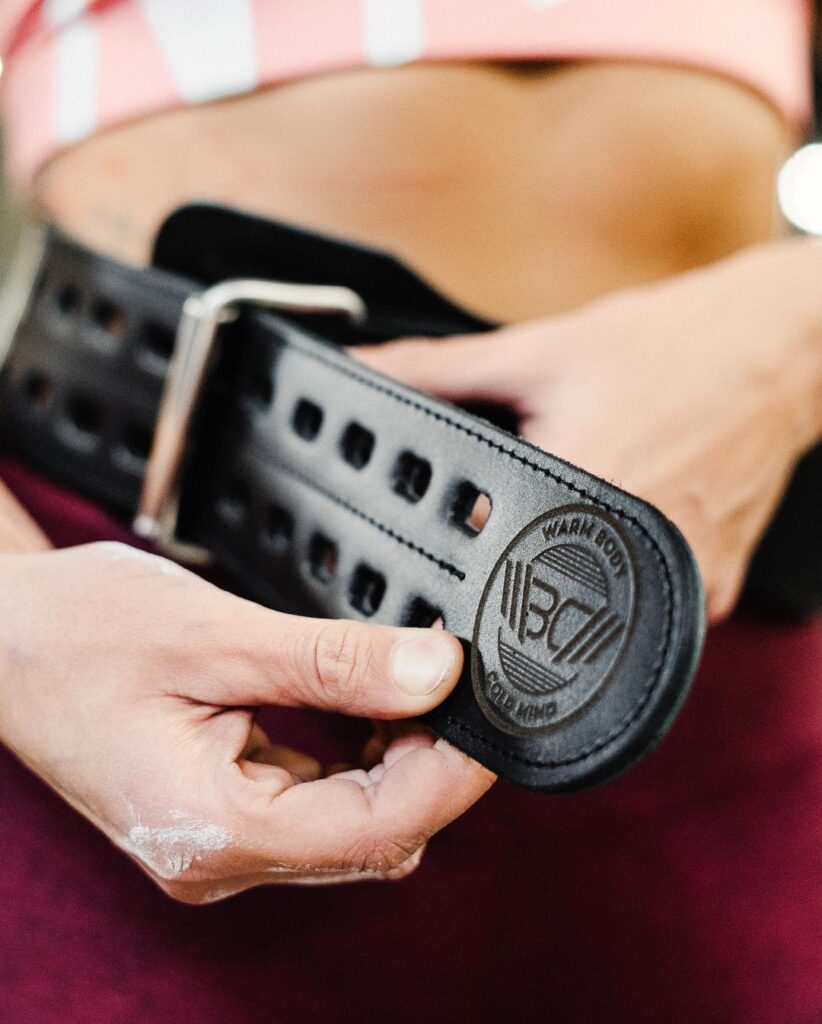
The belt is made of genuine grade-A leather, and it is 0.24 inches thick and 4 inches wide. The width is the key feature because it makes the belt wide enough to provide enough support, but still narrow enough to be comfortable and not distracting. It distributes the pressure evenly across your core and stabilizes the spine to prevent accidents and injuries.
As far as maintenance goes, there’s hardly anything to it. Use a damp cloth to wipe the belt down and you can also apply a leather conditioner from time to time to make sure the belt stays flexible and there are no cracks.
2. Powerlifting Belts
These have a consistent width all around and they provide a sturdy, wide support base. Like the name would suggest, they’re made for powerlifters who perform maximal lifts in the squat, bench press, and deadlift. Since the width is uniform, you get the most coverage you can, and it stabilizes your core and spine during lifts.
They’re ideal for people who want rigidity, especially in exercises with a more straightforward up-and-down motion. They’re not the best for dynamic movements, though, because their flexibility is rather limited.
Our Powerlifting Belt Recommendation – Flexz Fitness Lever Weightlifting Belt
Flexz Fitness’ weightlifting belt meets IPF and USAPL standards, and it’s suitable for both men and women. It comes in 6 sizes and 7 different colors.
The steel lever buckle is practically indestructible even under the heaviest use and the quick-release mechanism allows you to tighten or loosen it within seconds. You can wear this belt up to 4 inches tighter than traditional weightlifting belts because of its innovative design, and this can improve intra-abdominal pressure and stability.
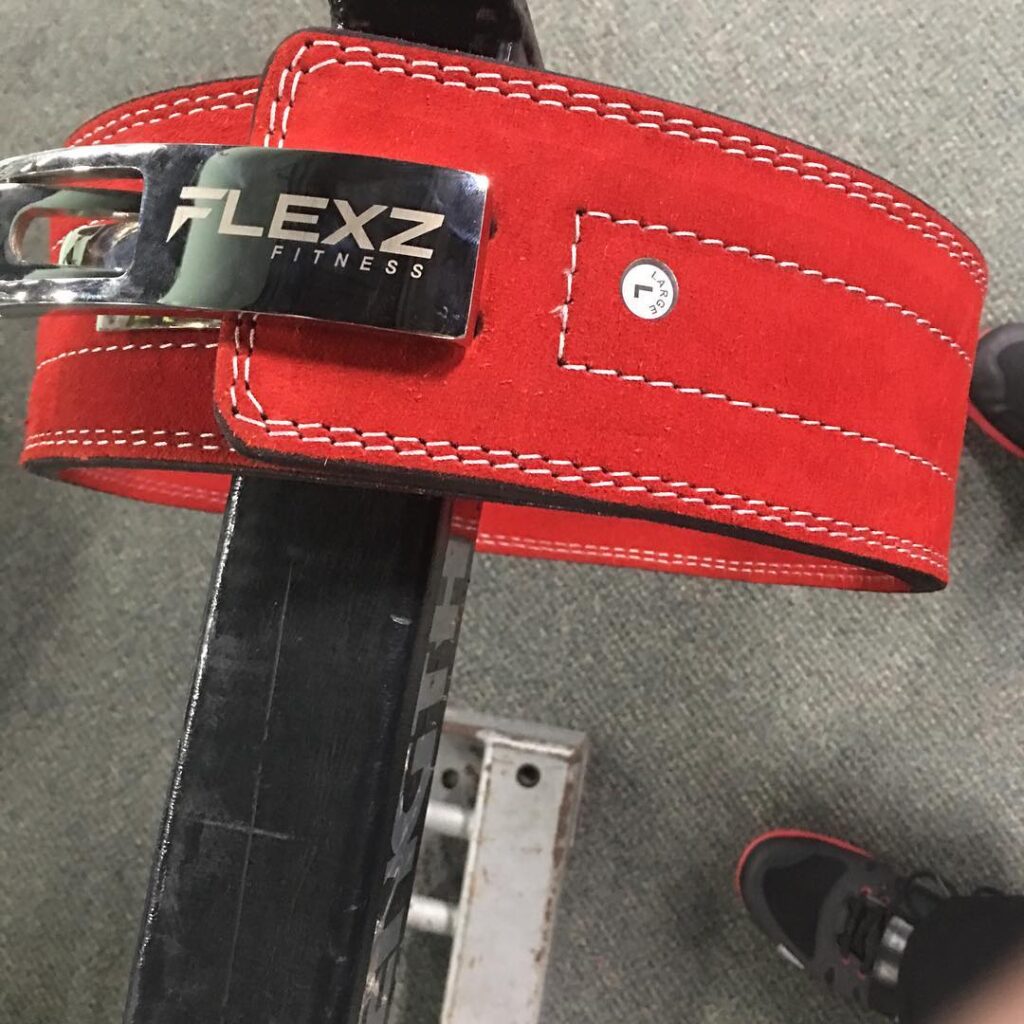
The belt is 0.39 inches thick and 4 inches wide, with contoured fitting and pre-broken leather. This means you don’t need to break-in the belt yourself, and it will be comfortable to wear right out of the box. The triple stitching is done very well, and it makes the belt even more durable.
It can support hundreds of pounds, so it’s suitable for deadlifts and squats, and the best thing – it comes with a lifetime warranty! That’s how sure Flexz Fitness is of the quality of their product.
3. Belts for Functional Fitness
Belts that are made for functional fitness are a balance between support and flexibility, so you pretty much get the best of both worlds. They often have a tapered design, and they will allow you to perform dynamic movements while supporting your core at the same time.
Functional fitness belts are great for exercises that need a combination of strength and agility because the tapered front doesn’t restrict your movement, so they can be used for a range of activities. Still, they don’t provide as much support as powerlifting belts.
Our Functional Fitness Belt Recommendation – WBCM Nylon Weightlifting Belt
Our nylon belt comes in 5 sizes, just like the leather one, but this one is made of nylon. And not just any kind of nylon – this one is premium quality and it’s made for powerlifting, weightlifting, bodybuilding, cross-training, and functional fitness.
Its main selling point, other than exceptional functionality, is the self-locking system that makes the belt fit perfectly and stay securely in place. You won’t be distracted by constant readjustments, and you can give your full attention to your workout.
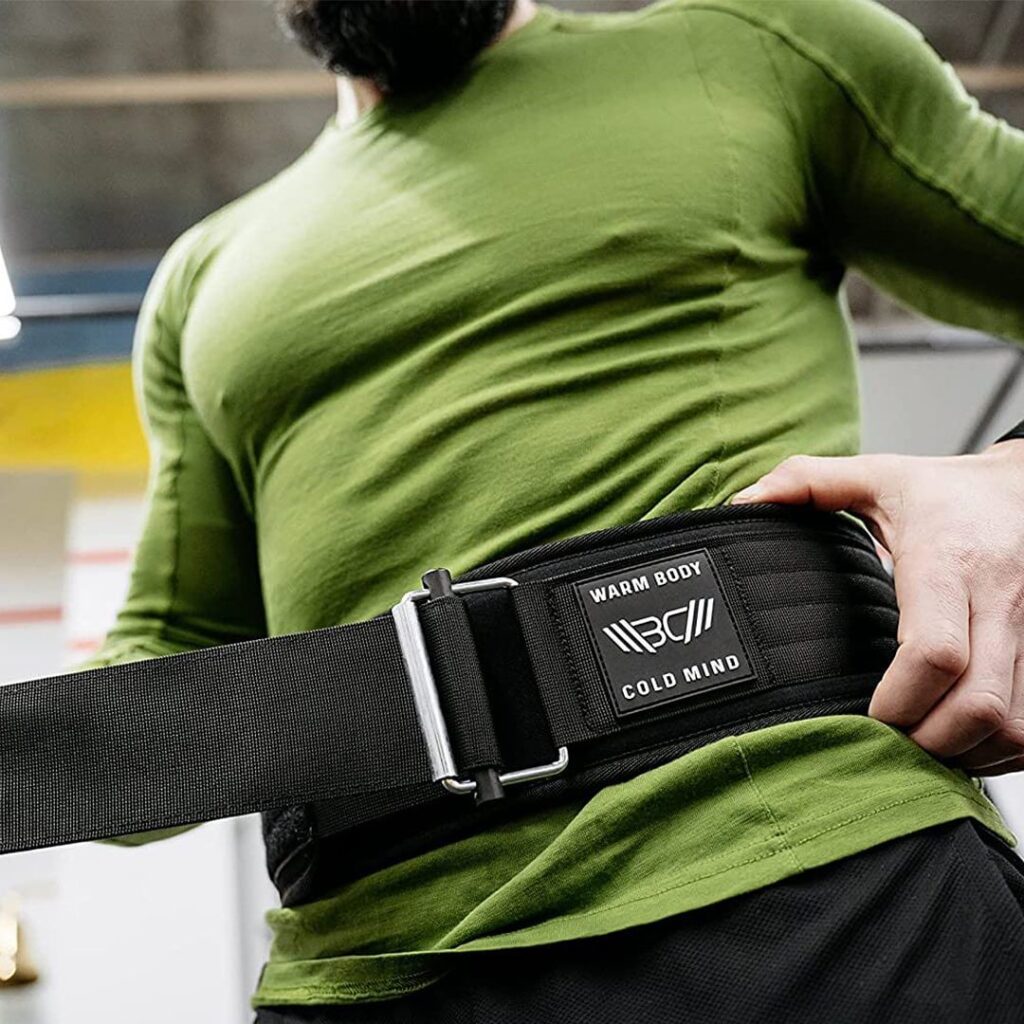
Although it’s made of nylon, this belt is breathable, and it will allow your skin to breathe through it. It’s designed to withstand super intense workouts and it gives support while staying comfortable and flexible.
Make sure to keep it clean using a damp cloth and mild soap and dry it with a clean towel after. Air-dry it completely before storing, and keep it in a cool, dry place.
4. Recreational Weightlifting Belts
If you’re a casual or recreational lifter, then you just want a belt that will support you and you don’t need any specialized features. Enter recreational weightlifting belts – their width is moderate, so they’re both comfortable and supportive.
They will work for anyone that does general weightlifting where you don’t need the maximum amount of support. Of course, they’re not even remotely suitable for heavy lifts or specialized movements.
Our Recreational Belt Recommendations:
WBCM Nylon Weightlifting Belt
WBCM Leather Weightlifting Belt
5. Dip and Pull-Up Belts
As far as looks go, dip and pull-up belts are the most unique. They have a chain or a strap attachment for additional resistance during bodyweight exercises and they’re used to add weight to things like dips and pull-ups. Their profile is usually narrow and allows you to move easily through exercises.
If you want to up the intensity of your calisthenics, a dip and pull-up belt will be your best friend, although you shouldn’t waste your time on it if you do only traditional weightlifting workouts.
Our Dip Belt Recommendation – Rogue Dip Belt
This belt is as durable as it can get and there’s nothing it won’t be able to handle. It’s made in the USA, and it is constructed from heavy-duty nylon and steel. It weighs only 3.2 pounds, so you can easily take it with you wherever you go. It will perform perfectly whatever you do – pull-ups, dips, or hip squats.
Rogue’s belt has a ¼ inch wide steel chain-link system and it’s paired with D-shaped carabiners, and it can take a lot of weight. The adjustments are effortless, and the back piece was recently updated, so now it extends to 4 inches with a fold-back design. This modification is fantastic because it takes care of the discomfort of the cut edge in the backer coming into contact during training sessions.
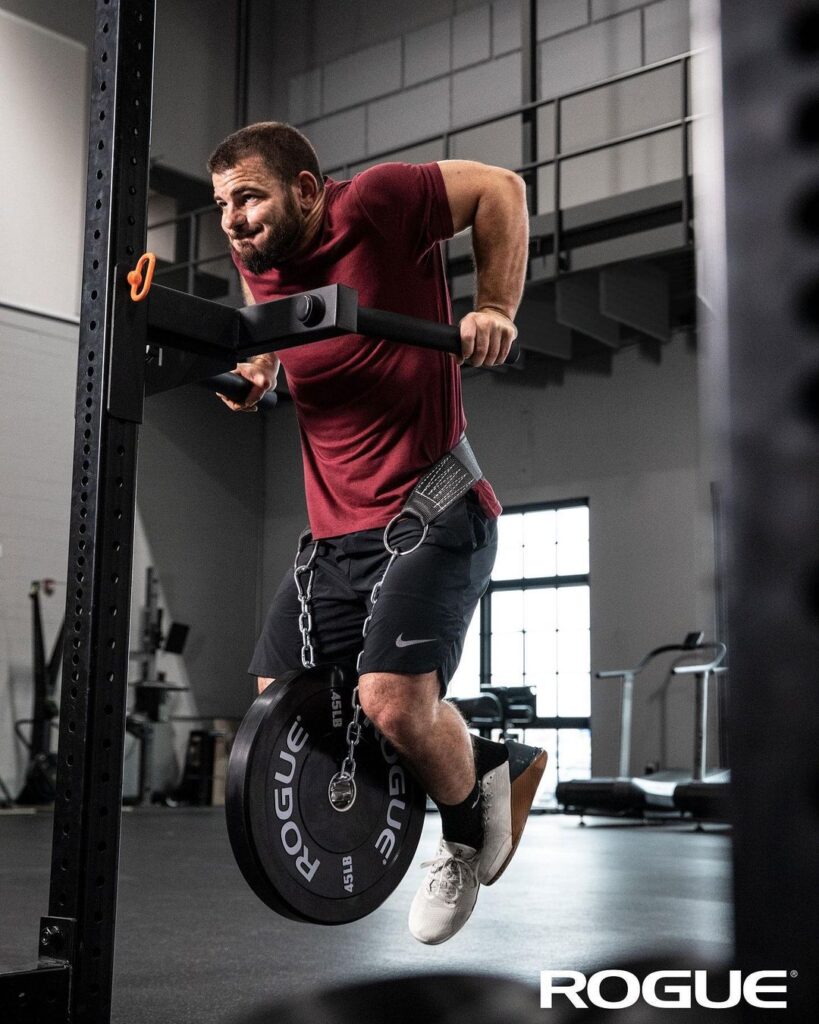
There are two colors to choose from (black and yellow) and both have Rogue’s exclusive branding. There’s only one size available for this belt and it is 3 inches wide and 30.5 inches long. It will suit a lot of people even though you can’t pick the size.
7 Main Tips for Picking the Right Lifting Belt
Say you’re looking through a bunch of online product reviews and you’re trying to find the best belt for yourself. There are two problems with this approach.
First of all, you can’t be sure if the review is sponsored or not because many people don’t disclose that information even though they should. If the review is sponsored, you have no way of knowing if the person genuinely likes the product or if they’re raving about it because they’re paid to do so.
Second, even if you come across a genuine review, there’s no way of knowing the belt that’s recommended will fit you and perform how you want it to unless you’re familiar with the things you should look out for. Reviews are a great source of information, and you should definitely take them into account, but only after you learn about the features and specifications that are important.
So, if you’re sitting there, asking yourself, “What kind of weightlifting belt should I get?”, we can help with that.
1. Think About Your Goals
The starting point is deciding what you want to achieve as far as working out goes. As you’ve seen in previous sections, there is a decent variety in weightlifting belts, so you need to choose the correct one. Do you want a flexible belt for dynamic movements like clean & jerks and snatches, or do you need the maximum amount of support for heavy squats and deadlifts? Once you figure out what you want, half of the work is done.
2. Consider the Width of the Belt
The width is what decides on the amount of support you’re getting. Generally, a wide belt has more surface area for stability, but a narrow one will give you greater freedom of movement. If stability is what you’re after, you will want a powerlifting belt that has a consistent width.
On the other hand, if agility is a priority, go for a belt that has a tapered front. Whatever you decide to pick, make sure it goes with your training style and the lifts you will be doing.
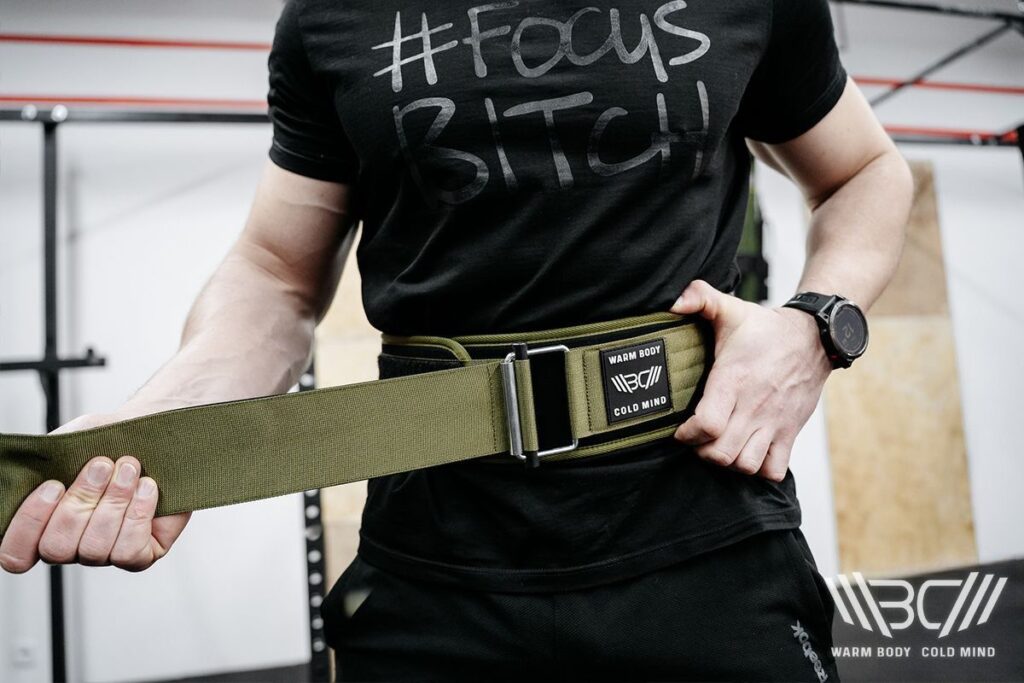
3. Material and Construction
Durability and comfort depend on the quality of the material and overall construction. Leather belts are famous for being durable and they will last you a really long time, not to mention the excellent amount of support they provide.
They’re very popular with powerlifters, although they’re usually a bit pricey. Nylon belts are also a good choice because they’re breathable, lightweight, and flexible, so they’re ideal for dynamic movements. Construction is another key feature – look for neat, preferably reinforced stitching, and a sturdy buckle system.
4. Thickness
Along with the width, thickness is another feature that influences the amount of support you’re getting from the belt. Thicker belts (0.4 inches or more) offer a lot of support and they’re your best bet for maximal lifts. Thinner belts (0.24 inches) have a balance of flexibility and support, so they’re more versatile and can be used for different exercises.
5. Fastening Mechanism
We’ve gone over the different fastening mechanisms already, but were you able to choose the right one for you?
Lever buckles are quick and easy to use, so they’re popular in powerlifting. You can also go for prong buckles that give a secure fit and can be tightened as much as you need. Velcro belts are another good option because the fit is very customizable and they’re convenient for quick workouts.
6. Sizing
If you don’t get the size right, everything else won’t matter. If the belt is too tight, it will restrict your movement, and if it’s too loose, it won’t give you enough support, and it will distract you. Check the manufacturer’s sizing guide and compare it to your waist size. It would be ideal if you could try the belt in person, but if you can’t, stick with the sizing chart and remember that you want a snug fit that allows for adjustments.
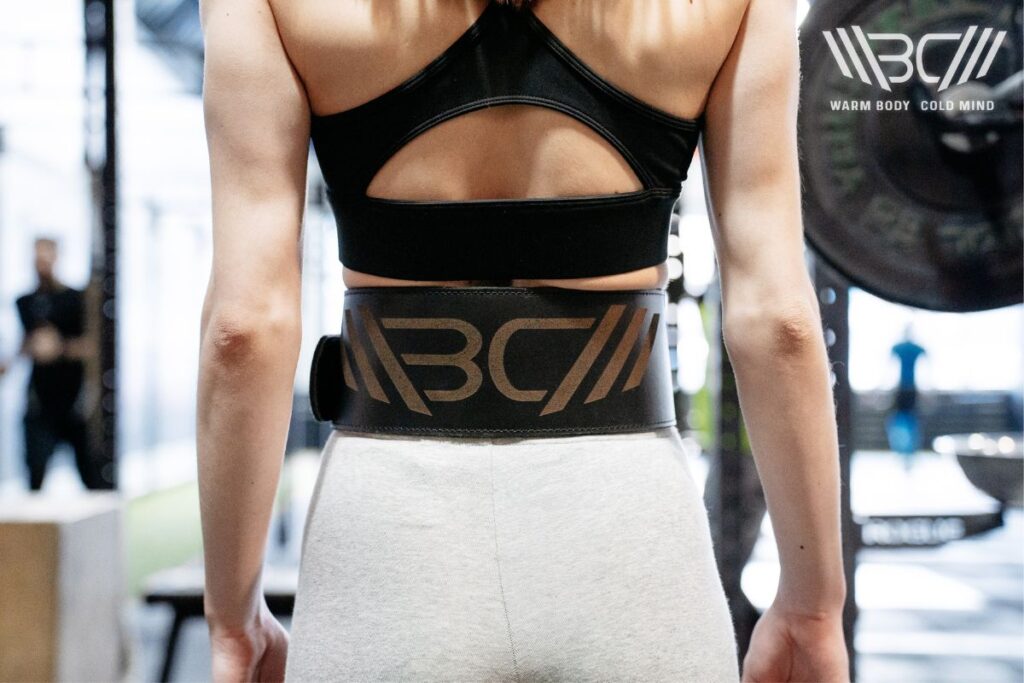
7. Compliance with Regulations
If you don’t compete, then go on to the next section, but if you do, check the lifting belt regulations of the governing body. IPF and IWF have very specific guidelines when it comes to belt dimensions and features, so you need to make sure your belt complies with them or you risk having issues during sanctioned events.
FAQ
Are Cheap Lifting Belts Bad?
No, cheap belts aren’t necessarily bad. They may not have some premium features expensive belts have, but there are a lot of excellent budget options that perform splendidly. If you’re a serious weightlifter, you may want to invest in something more durable, but if you’re not, a budget belt will do as long as it’s made of quality materials.
Is a Thicker Lifting Belt Better?
It depends on what you need the belt for. A thicker belt (0.4 inches or more) is better for maximal lifts because you need more support. A thinner belt, on the other hand, is better for exercises that need flexibility.
Are All Lifting Belts Approved for Competitions?
No, not all lifting belts are approved for competitions, but how great would that be? IPF and IWF have specific guidelines when it comes to the belt’s dimensions and features, and not all belts comply with them.
What Is a Weightlifting Belt for Women?
A weightlifting belt for women serves the exact same weightlifting belt purpose as the weight lifting belt for men, but this one is designed to fit the female anatomy. It stabilizes the core during strength training, and it offers back support.
Conclusion
This belt, that belt, lever buckle, prong buckle… How on Earth will you be able to choose?
Well, now you know what are gym belts for! We’ve covered everything belt-related, from what is a lifting belt for to what features you need to look out for, and you have some great recommendations to try out. Just remember that the best belt needs to be aligned with the type of workouts you do, and the best choice is not necessarily what your trainer or favorite influencer tries to get you to buy.
What do you have to add to this topic? Which belt is your favorite and how were you able to pick correctly? Have you ever had a belt that didn’t suit you and what issues did it cause?
Let’s talk about belts some more because there has to be something you can contribute!
References:
- A. J. Zink, W. C. Whiting, W. J. Vincent, A. J. McLaine “The Effects of a Weight Belt on Trunk and Leg Muscle Activity and Joint Kinematics During the Squat Exercise,” Journal of Strength and Conditioning Research 15, no. 2 (2001): 235-240.
- Idsart Kingma, Gert S. Faber, Edin K. Suwarganda, Tom B. M. Bruijnen, Rob J. A. Peters, Jaap H. van Dieën “Effect of a Stiff Lifting Belt on Spine Compression During Lifting,” Spine (Phila Pa 1976) 31, no. 22 (2006): E833-839.
- J. E. Lander, J. R. Hundley, R. L. Simonton “The Effectiveness of Weight-Belts During Multiple Repetitions of the Squat Exercise,” Medicine & Science in Sports & Exercise 24, no. 5 (1992): 603-609.
- Jim Stoppani, Ph.D. “3 Key Benefits Of Wearing A Weightlifting Belt,” Bodybuilding, https://www.bodybuilding.com/content/3-key-benefits-of-wearing-a-weightlfting-belt.html (accessed January 24th 2024).
- W. Ben Kibler, Joel Press, Aaron Sciascia “The Role of Core Stability in Athletic Function,” Sports Medicine 36, no. 3 (2006): 189-198.
Author: Sergii Putsov
PhD in Sport Science, Olympic weightlifting, Strength & Conditioning coach and fitness expert
Sergii Putsov is a professional weightlifter with over 20 years of experience and multiple national medals. He was a member of the National weightlifting team, competing in the 94 kg weight class. Sergii holds a master’s degree in Olympic & Professional Sport Training and a Ph.D. in Sport Science. After his athletic career, Sergii transitioned into coaching and is now responsible for designing training programs, writing blog articles, providing live commentary for international weightlifting competitions, and hosting sport and fitness seminars worldwide.

